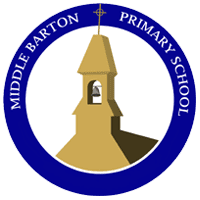Writing
|
Intent |
We strive to help our children develop into articulate and imaginative communicators, who are well-equipped with the basic skills they need to become life-long learners. We aim to ensure all of our children develop a genuine love of language and the written word, through a text-based approach; this links closely to the way we teach reading. Careful links are made across the curriculum to ensure that children’s writing is relevant and meaningful: where possible linking our reading, writing and other subjects. We ensure that children develop an understanding of how widely writing is used in everyday life and, therefore, how important and useful the skills are that they are learning. Our intentions in writing are for children to:
|
|
Implementation |
Writing process-writing is taught through the understanding of the writing process (how real-world writers create their texts). Beginning with the purpose for their writing – what they want their text to achieve and who their audience is – children engage with new projects through the development of ideas. This is followed by the planning and drafting section. The next part of the process is the revision process, which is where children have the opportunity to improve their writing and develop their language. The last two stages of the writing process are the editing stage, for accurate punctuation and spelling, and the final stage which is publication. All writing sessions are supported through the teaching of grammar that is applicable to their work, the use of exemplar materials and high quality modelling, demonstrated by their teacher, of each stage of the process. Phonics/Spelling is taught using Bug club in EYFS and KS1, progressing on to using Spelling Shed. Phonics is taught daily in EYFS and KS1 to support the writing process and Spelling Shed is taught weekly in KS2. Handwriting is taught through phonics in EYFS and KS1 using the Bug Club programme. It is taught non-cursive in EYFS and then builds up to cursive as they move through KS1and then to joining. |
|
Impact |
Writing is tracked and monitored in various ways. Written work can be marked following the feedback policy and whole class and verbal feedback is used frequently throughout lessons. Teachers summatively assess the children three times a year using Hellodata to submit this. End of Key Stage writing is assessed using Teacher Assessment and this is then submitted to the County and DfE. We also use a system called No More Marking where each Year group submits an independent piece of writing once a year that is then uploaded onto a system and comparatively judged against other schools. Comparative judgement is a process where judges compare two responses and decide which is better. Following repeated comparisons, the resulting data is statistically modelled and responses placed on a scale of relative quality. The system then produces a report that can be used to identify reading ages and whether the children are working towards, at expected or greater depth. |
Useful Information
Please click to access or download the useful documents below:


